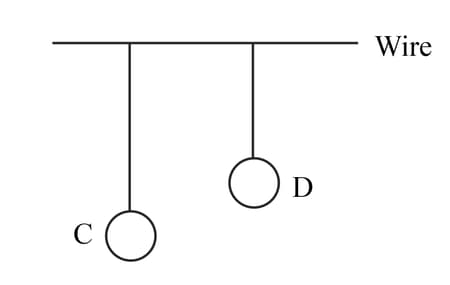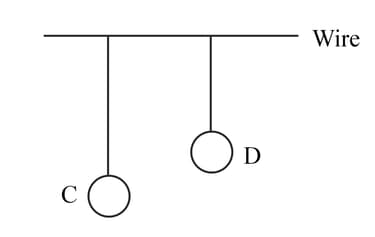To study the dissipation of energy student Plots a graph between square root of time and amplitude. The graph would be a -
Important Questions on Simple Harmonic Motion
A pendulum with the time period of is losing energy due to damping. At a certain time, its energy is . If after completing oscillations its energy has become , then its damping constant (in ) will be
Two pendulums and are suspended from a wire as shown in the given figure. Pendulum is made to oscillate by displacing it from its mean position. It is seen that also starts oscillating. If the length of is made equal to , then what difference will you notice in the oscillations of ?

The amplitude of a simple pendulum, oscillating in air with a small spherical bob, decreases from 10 cm to 8 cm in 40 seconds. Assuming that Stokes law is valid, and ratio of the coefficient of viscosity of air to that of carbon dioxide is 1.3, the time in which amplitude of this pendulum will reduce from 10 cm to 5 cm in carbondioxide will be close to (ln 5 = 1.601, ln 2 = 0.693).

If the particle starts its motion from mean position, the phase difference between displacement and acceleration is ____.

